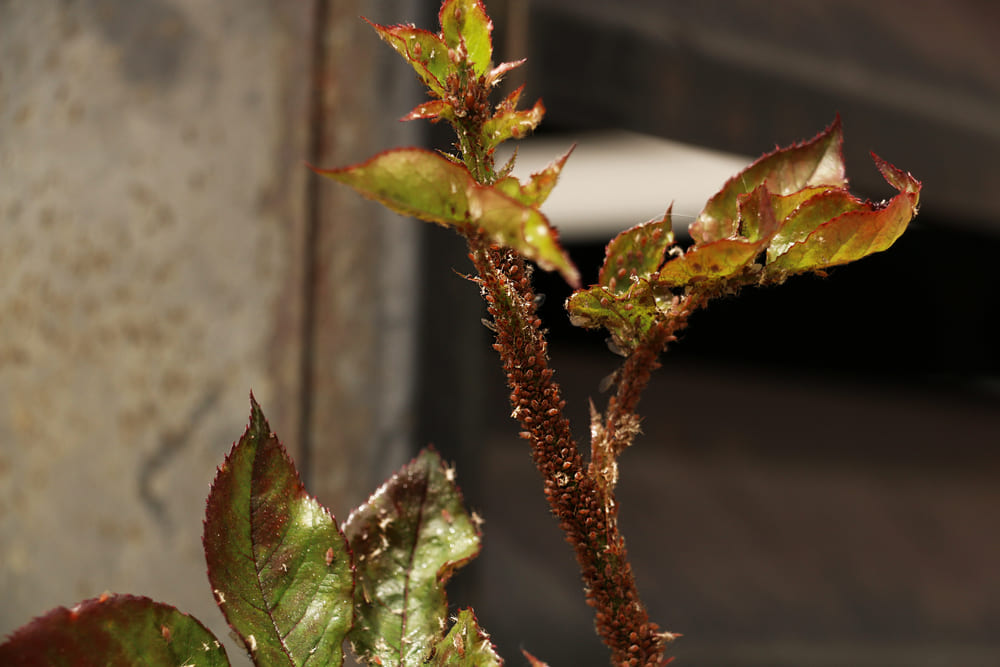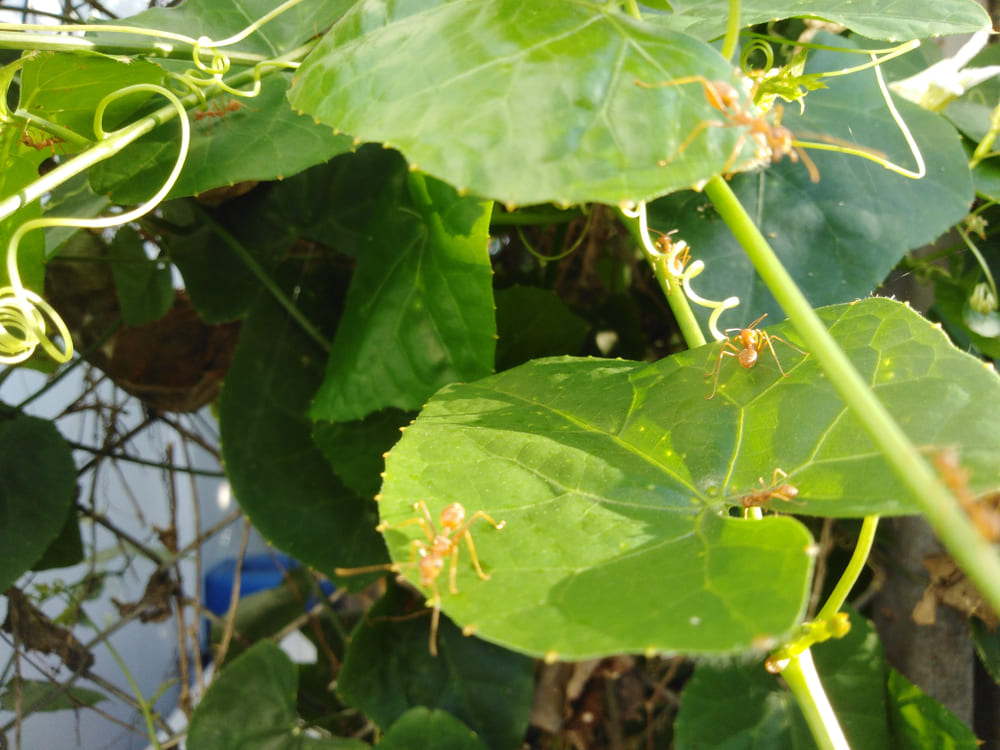Ants on grape vines are a common sight in vineyards and can have a significant impact on the health and productivity of the plants.
These tiny insects may seem harmless, but they can actually cause serious problems for grape growers if left unchecked.
In this article, we will explore the various ways ants can affect grape vines, why it’s important to manage them, and how to identify and address ant infestations.

Why managing ants in vineyards is important for grape production
Managing ants in vineyards is crucial for maintaining healthy grapevines and ensuring a successful harvest.
Ants can cause direct damage to the vines by feeding on the tender shoots and leaves, which can stunt growth and reduce yield.
Additionally, ants often form a mutualistic relationship with aphids, mealybugs, and other pests that feed on grapevines.
These pests secrete a sweet substance called honeydew, which ants love to feed on.
In return, ants protect these pests from their natural predators, allowing their populations to grow unchecked and cause even more damage to the vines.
By managing ants in the vineyard, grape growers can help keep pest populations under control and prevent the spread of diseases that these pests can transmit.
Signs of ant infestations on grape vines and potential damage caused
There are several telltale signs that ants have infested grape vines, and early detection is key to minimizing the potential damage.
Some common indicators of ant infestations include:
- Visible ant trails on the vines, especially near the base of the plant or along the trellis system
- An increase in the presence of aphids, mealybugs, or other pests on the grapevines
- Yellowing or wilting leaves, which can be a result of ants feeding on the plant
- Deformed or stunted growth of the grapevine
- A decrease in grape production or quality
If left untreated, ant infestations can lead to a significant reduction in grape yield and even the death of the grapevine.
Moreover, ants can also contribute to the spread of diseases such as grapevine leafroll virus, which can have long-term negative effects on the health and productivity of the vineyard.
How ants are attracted to grape vines and ways to repel them

Ants are attracted to grape vines for several reasons, including the presence of pests that secrete honeydew and the availability of food and shelter.
To effectively repel ants and protect grapevines, it’s important to implement a combination of preventive and control measures.
Some strategies to consider include:
- Regularly inspecting grapevines for signs of ant infestations and addressing any issues promptly
- Removing debris and weeds from the vineyard, which can provide ants with shelter and food sources
- Pruning grapevines to improve air circulation and reduce the likelihood of pest infestations
- Applying natural or chemical ant repellents around the base of grapevines or along the trellis system to deter ants from climbing the plants
- Introducing beneficial insects, such as ladybugs and lacewings, which can help control aphids and other pests that attract ants
- Using baits or traps to control ant populations in the vineyard
Strategies for managing ants on grape vines, including baits and ant-repelling plants
Ants on grape vines can be a major issue for vineyard owners, as they can cause significant damage to the plants and reduce overall grape production.
To effectively manage ants in your vineyard, it’s essential to employ a combination of strategies, including the use of baits, ant-repelling plants, and other control methods.
In this section, we will discuss some of these strategies and provide tips for implementing them in your vineyard.
Using baits to control ants on grape vines
Baits are an effective way to control ant populations in vineyards, as they target the ants directly and can help reduce their numbers over time.
There are several types of baits available, including protein-based baits, sugar water-based baits, and oil baits.
When selecting a bait, it’s important to choose one that is appropriate for the type of ants you are dealing with, as different species may prefer different food sources.
Planting ant-repelling plants in your vineyard
Another strategy for managing ants on grape vines is to plant ant-repelling plants around your vineyard.
These plants produce chemicals or have characteristics that deter ants from approaching the grape vines.
Some examples of ant-repelling plants include lavender, mint, and marigolds.
By incorporating these plants into your vineyard, you can create a natural barrier that helps keep ants away from your grapevines.
The use of corncob grit and oil baits, as well as sugar water-based baits for ant control

Corncob grit and oil baits are a popular choice for controlling ants in vineyards, as they are both effective and environmentally friendly.
These baits consist of corncob grit soaked in vegetable oil, which attracts ants and encourages them to feed on the bait.
As the ants consume the bait, they become coated in the oil and are unable to return to their nest, eventually dying from exposure or predation.
Sugar water-based baits are another option for ant control in vineyards.
These baits consist of a sugar solution that is mixed with a small amount of insecticide.
As ants consume the bait, they carry it back to their nest, where it is shared with other ants and the queen.
Over time, this can help to reduce the overall ant population in the vineyard.
Other methods for controlling ants in vineyards, including cultural practices and insecticides
In addition to baits and ant-repelling plants, there are several other methods that can be used to control ants in vineyards, including cultural practices and the use of insecticides.
Cultural practices, such as proper sanitation and pruning, can help to reduce the likelihood of ant infestations by eliminating potential food sources and nesting sites.
Additionally, introducing beneficial insects, such as ladybugs and lacewings, can help to control pest populations that may attract ants to your grapevines.
Insecticides can also be used to control ants in vineyards, although they should be used sparingly and as a last resort.
When using insecticides, it’s important to select a product that is specifically designed for ant control and to follow the manufacturer’s instructions for application.
Importance of ongoing ant management in grape vineyards for optimal grape production
Ongoing ant management is crucial for maintaining healthy grapevines and ensuring a successful harvest.
By regularly monitoring your vineyard for signs of ant infestations and implementing the appropriate control measures, you can help to prevent damage to your grapevines and maintain optimal grape production.
It’s important to remember that ant control is not a one-time solution but rather an ongoing process that involves regular monitoring, preventative measures, and targeted interventions as needed.
Conclusion: Keeping Your Grape Vines Ant-free
In conclusion, managing ants on grape vines is an essential aspect of maintaining a healthy and productive vineyard.
By employing a combination of strategies, including the use of baits, ant-repelling plants, cultural practices, and insecticides, you can effectively control ant populations and protect your grapevines from damage.
Remember that ongoing ant management is key to ensuring the long-term health and success of your vineyard.
